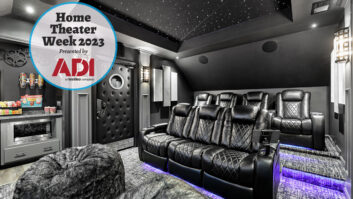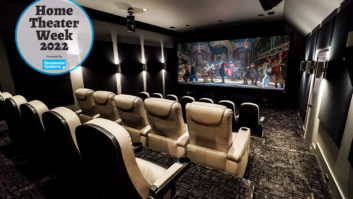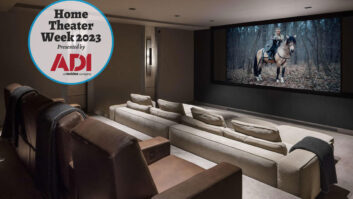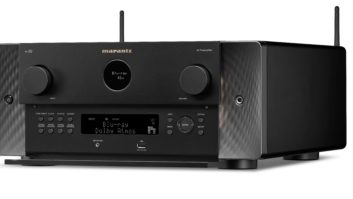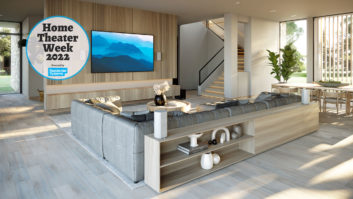
Most home theaters aren’t installed in smaller homes with a limited amount of extra space. As a result, it’s unusual to find clients who want home theaters in small spaces, mainly because most believe it can’t be done. But when the request presents itself, small rooms provide a great opportunity to get creative with home theater design, specifically theater seating.
At first glance, setting up a home theater in a small space may seem difficult. Here, we have some tips for home theater designers to follow to ensure their clients can enjoy a luxurious theater space and premier home theater seating even with limited square footage.
1. Risers Are a Must
Often risers are seen in bigger home theater spaces where the aim is to make the space look as much like an actual movie theater as possible. But risers are optimal for small theaters as well. The vertical space utilized allows viewers to see over one another, allowing for more rows, and therefore group movie viewing in small theaters.
Risers also create grandeur in a home theater, even in a small space, a characteristic all home theater owners appreciate. Not only that, risers can make an awkward space — like a narrow, usable living area — usable, ensuring home owners get the most out of every inch of their property. Check out the narrow home theater below for an example.
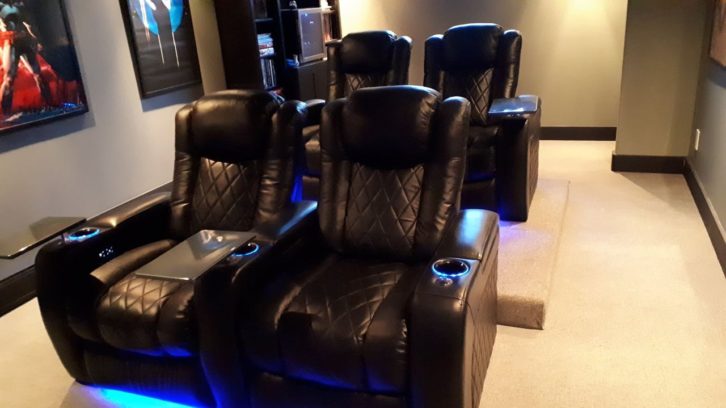
2. Slim Seating
When it comes to small theaters, many theater seats aren’t suited to these spaces because they are bulky. Although the spacious feel of large theater seats may seem luxurious, overall, in a small theater they make the room feel claustrophobic. In this case, recommending narrow theater seats for clients is best to ensure the furniture is relative to the size of the space.
The great news for homeowners looking to set up a small home theater is that slim seating exists. For example, Valencia Theater Seating offers its Tuscany theater seat in a slim version that measures 34 inches wide, making the seat space-conscious and a favorable option. The seat also has a wall-hugging design to lessen the amount of space needed behind the chair. Saving room with seating allows for greater aisle space and room for other needed home theater accessories and equipment.
3. Loveseats and Couches
Another great option to save space via seating is to advise clients to purchase a loveseat theater seat, which is more practical than a row of single recliners. Without an armrest separating the seats, clients may have fewer cupholders, but this will ultimately save space. This seating option also gives home theaters a cozier feel that clients will appreciate if they are building a family or couple’s home theater.
If three seats are needed, many home theater seats can also be turned into couches, or a loveseat can be incorporated into a row of three with one single recliner attached to the end. These options can further be made with slim theater seats, further utilizing the space wisely.
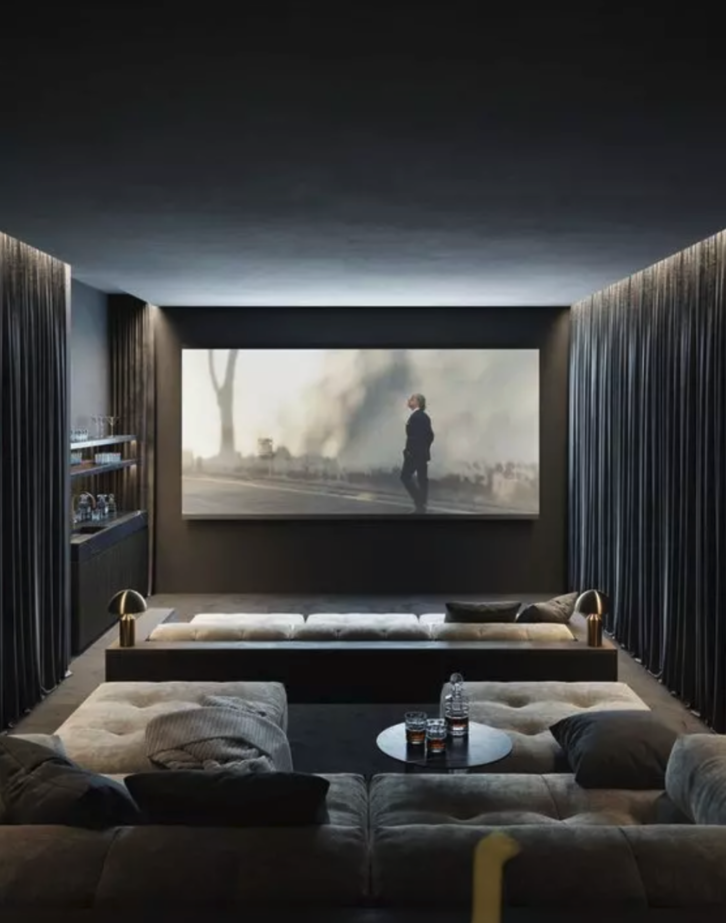
4. Sound Absorbent Materials
The audio-visual experience in a small theater differs considerably from larger home theaters due to the bouncing of sound more quickly off the room’s surfaces. With less space for sound to travel, preventing reverb is of the utmost importance. Theater seating provides a great opportunity to do just that.
When recommending materials for theater seats in small home theaters, velour is a great option. Just as velour is used for theater curtains, this material is equally useful for sound absorption when used as theater seating upholstery. With headrests specifically, sound is absorbed around the head and closer to the ears, enhancing the audio-visual experience.
Added bonus: clients will appreciate the soft-to-the-touch feel of the velour that makes the home theater experience warmer and cozier, and a great choice for basement theaters.
5. AV Rack — Keep It Outside
In a regular home theater, keeping the bulk of equipment out of the way is important to save space. But in a small home theater, keeping the AV Rack out of the way is vital to help incorporate home theater seating and utilize all possible square footage.
Built-in AV racks are popular, but in small home theaters this option may not be available. There is less room to build out the walls for the system or space may not be available behind the wall to build it into the next room. Without these options, keeping an AV rack in the home theater takes up prime real estate that could be used for theater seating and creating flow in the space. As a result, recommending to clients that they put the central AV rack in a room outside or adjacent to the theater room is a great idea.
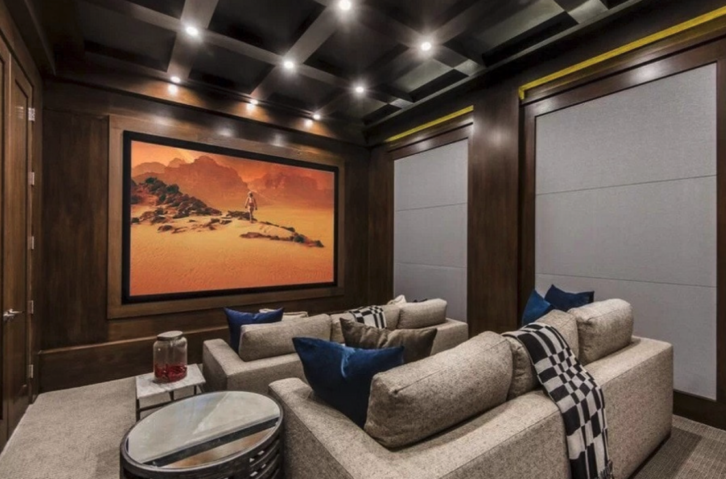
6. The Walls are Your Friends — Mount As Much As You Can
Mounting flat speakers on the walls, stereo speakers in the room’s upper corners, and speakers beneath the projector at the front of the room, as well as acoustic panels on the walls (as would normally be done) will save space. Not only will this take up fewer square feet allowing for better use of the floor plan for seating, but it will also provide a great surround sound experience and airy feeling.
7. Utilize Every Inch of Your Screen Wall
When it comes to the actual visual system itself, a screen is far more favorable. This reduces bulk in the space that is created by a TV. Finding a screen that perfectly fits the client’s viewing wall or ordering a custom screen is another great way to make sure the viewing experience from every seat is optimal. This is obviously a no-brainer for any home theater designer, but making the screen as big as possible will also make the space seem bigger.
8. Short Throw Projectors Are a Lifesaver
Small basement home theaters can pose a problem when it comes to projectors, especially if risers are needed to optimize the space or the ceilings are low. To prevent an obstructed view from a bulky overhead projector, or even just to avoid knocking the projector when standing up on the riser, short throw projectors are ideal. Because short throw projectors can be placed at the front of the row beneath the projector, they are nicely out of the way and are a great way to save space in a small theater.
9. Built-in Lighting Is the Way to Go
Similar to an overhead projector, using any hanging lights, sconces, or lamps creates unnecessary clutter in the space, can obstruct the viewing experience, and can be hit when trying to navigate the small space. As is common with most home theaters, pot lighting or track lighting are recommended to optimize the space.
10. Perforated screen
A perforated screen is the final, greatest way to optimize a small home theater. The audio benefits of a sound transparent screen are obvious, but much like the other tips suggested in the article, being able to hide subwoofers and stereo speakers behind the screen will declutter the space and keep bulky sound equipment out of the way, making the space feel bigger, enhancing the surround sound experience, and ensuring theater seating gets the priority real estate in the room.

